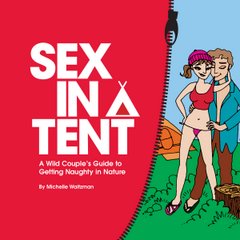
This story is a bit old now, but I'm not sure whether it got much international coverage so I thought it was worth posting about, as a sort of cautionary tale.
In late March, a 35-year-old Israeli tourist named Liat Okin decided to walk the Routeburn Track in southern New Zealand. This track is one of the heavily-marketed "Great Walks". The track is well-marked, and there are large, comfortable huts where most trampers spend their nights.
Okin was reportedly not well prepared for the wilderness. She was wearing jeans and sneakers, carrying not much food. After spending the night at Mackenzie Hut, she was not seen again.
A police search of the track and surrounding wilderness did not turn up any clues to her whereabouts. After several weeks the official search was called off. If she was still out there, it was unlikely that she could survive for so long.
Okin's family, led by her brother, mounted their own privately-funded search to continue looking for her. But by mid-May there was still nothing new, and her brother reluctantly admitted that they would have to give up the search.
On May 15, the last day of searching scheduled, they found her backpack and shoes. Then her body was found at the bottom of a steep creek. She had, apparently, gone off the trail by only a few hundred metres and fallen to her death.
The "bright side" is that it looks like she fell and died the same day she went missing, rather than being lost and freezing in the wilderness for several days. Even if she had been found weeks earlier, nothing could have saved her life.
Going into the wilderness alone, even on a well-used track like the Routeburn, is risky. Nobody was expecting to see her that night at the next hut. The search only began a week later when her family hadn't heard from her.
I haven't tried anything like this alone, but if I did, there would be certain precautions I'd take to make sure that if something went wrong, somebody would at least be looking for me.
Ideally, I would buddy-up with someone else, or a group of people, walking the same was as me. On a track like this, there would be no problem finding someone. That way, if you had a bad fall or disappeared, somebody would know.
If that wasn't possible, I would at least chat with the other people at the hut, and tell them to expect me at the next hut the next night. So if I didn't show up, there would be questions. Perhaps our lost Israeli didn't speak English very well, so she didn't mingle with the others at the hut.
I would also fill out an intentions form before starting the trail. The Department of Conservation and the Mountain Safety Council make these available so that someone knows when you should be returning, and what route you're planning to follow.
As I said, none of that would help if you died in a fall like Liat Okin did. But more often, people are lost for several days before the weather or injuries finish them off. And in that case, the key is to make sure somebody knows to look for you.
This is a good reminder that there are no "risk-free" wilderness adventures. Every time you throw on the backpack, you really need to understand what you're getting into and know how to handle yourself when something goes wrong.
OK, enough preaching for now. My condolences to Liat Okin's family. It's small comfort, but at least they finally know what happened.







1 comment:
Hi, it is frightning really, people wandering off in to wild areas. Folk fail to realise just how things can swiftly turn bad in wilderness areas. Maybe I am not the best person to say that. The reason being that I travel regularly solo, summer and winter. often in the Scottish highland region. In my defence I would say that I have many years eexperience behind me. Several times in my travels I have come across people ill prepared for the conditions they where experiencing. Another factor here of course, is not just having the right equipment, but have the proper equipment and the know how to use it correctly. Travel safely. Dawn
Post a Comment